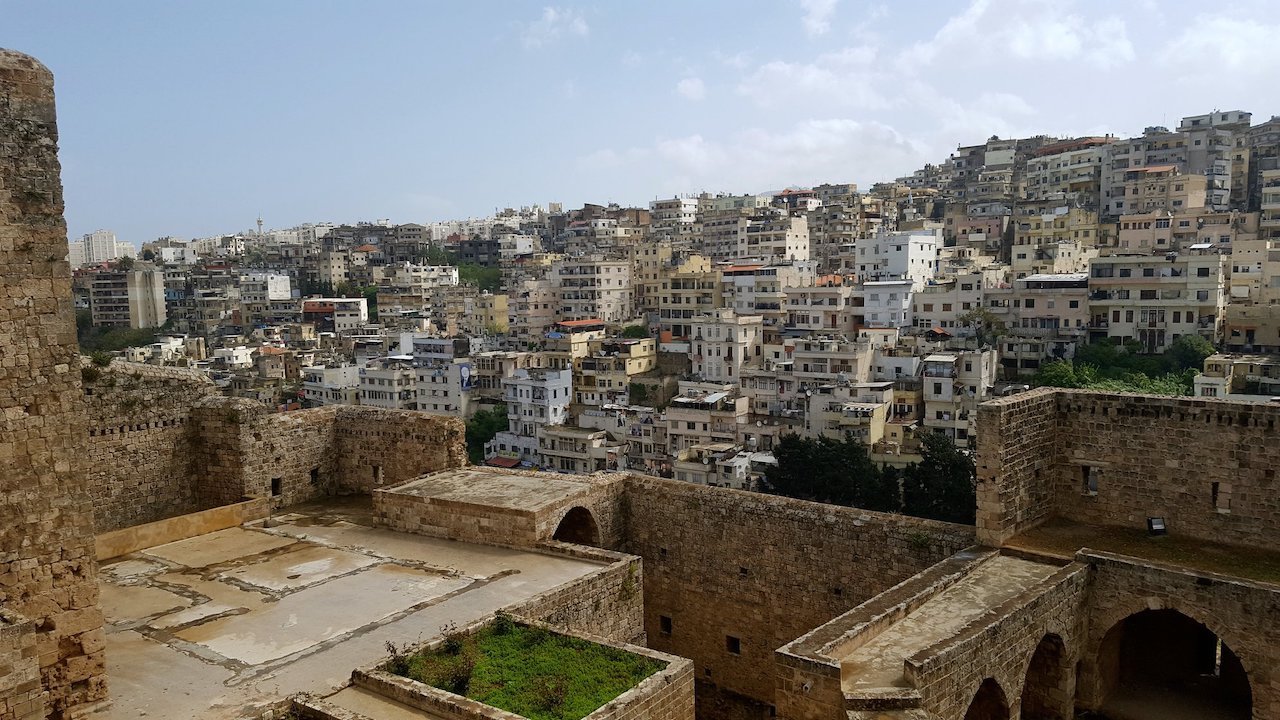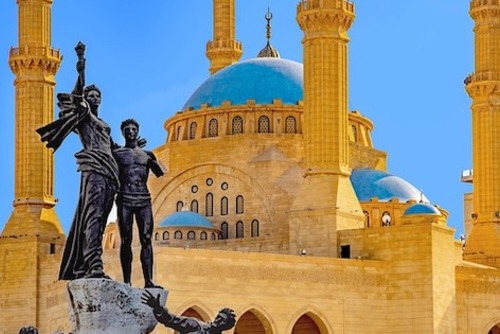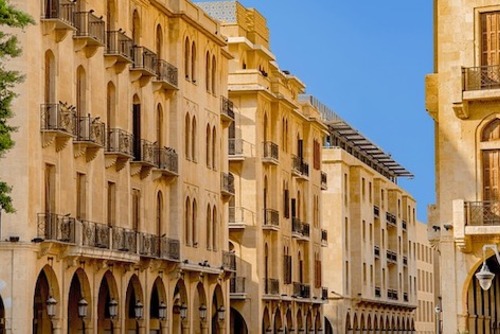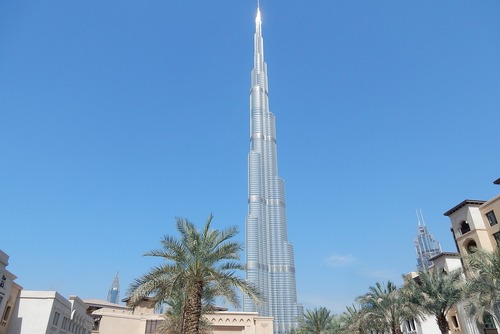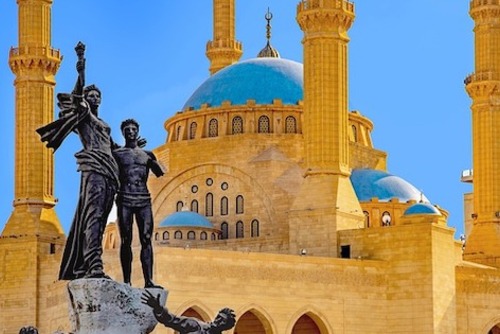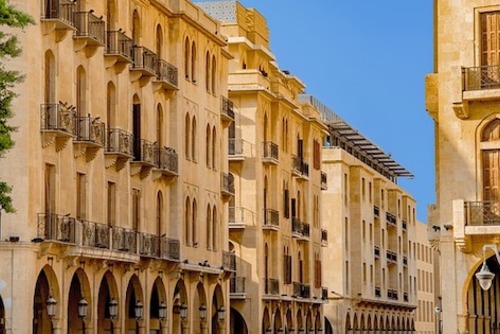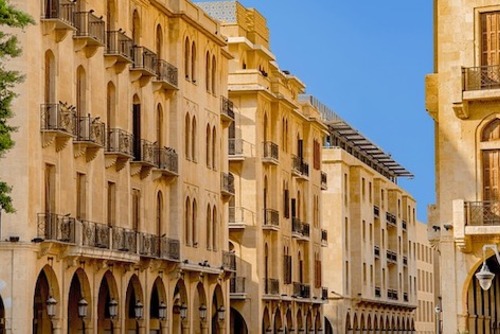But the tiny country also has it own twist, where seemingly infinite sandy plains dramatically give way to spectacular verdant valleyscapes, and ancient cities and Islamic architecture are juxtaposed by urbane hipster neighborhoods.
Luckily, with its network of informal minibuses and relative stability, Lebanon is safe and accessible for travelers.
Here’s a guide on how to make the most of the country and see highlights in just one week:
Days 1-2: Beirut
The so-called Paris of the Middle East is a veritable hodgepodge of neighborhoods, and an ideal hub to launch your day trips across Lebanon from and return to to chill in the evening.
If you are on a budget there’s no better place to stay than Hostel Beirut, a homely abode-cum-NGO, where backpackers from all over come to share an Almaza beer on the terrace.
Its best to explore Beirut by foot. From Hostel Beirut in the lively Mar Mikhael, replete with Parisien architecture, follow the famous Armenia Street westward winding into Gemmazeye district passing hipster cafes, bars, and shawarma stops, pausing to walk up the city’s many colorful stairways.
At night the area transforms into a brimming spot for bar crawls and clubbing. You’ll never be far from amazing food. Try the casual shawarma restaurant Barbar, and the incredible hummus dishes in Cafe Em Nazih, or treat yourself to the Samke Harra, a tasty spiced fish dish, at El Denye Hek.
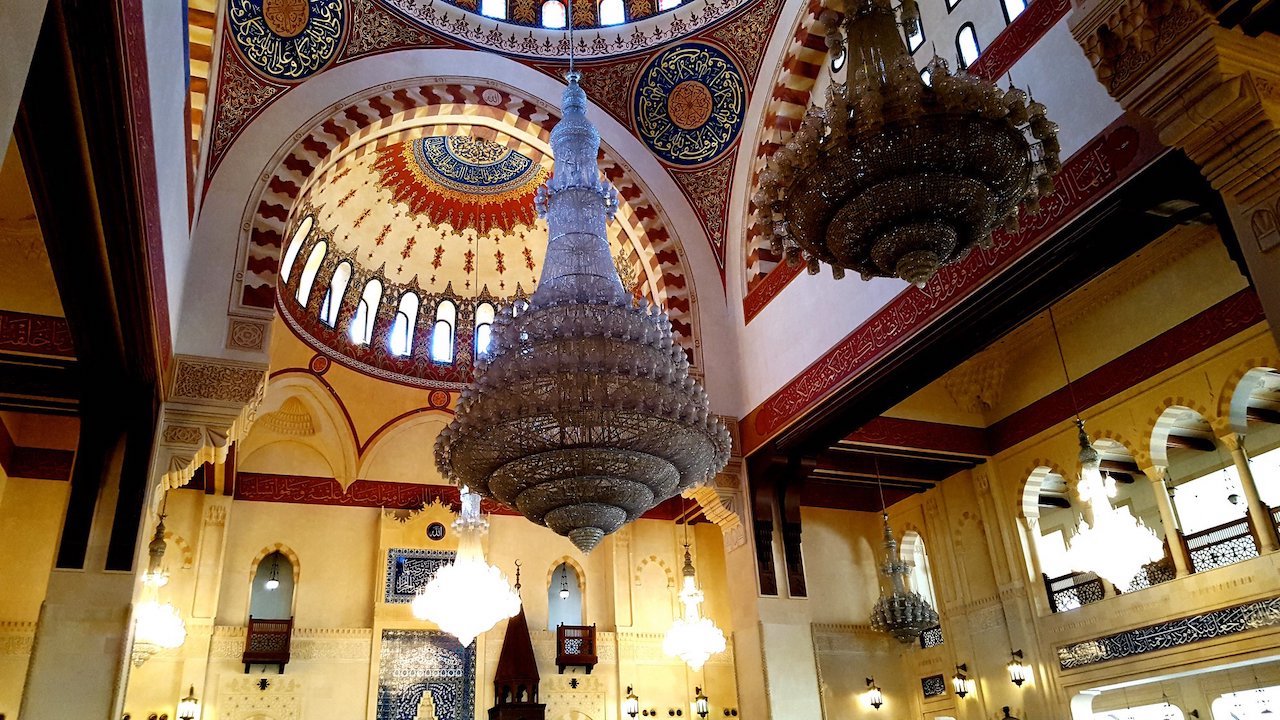
(Mohammed al-amin mosque, Beirut)
Continue westward, gazing at the grand ceilings of the Mohammed al-amin mosque and wander through Beirut’s souqs and beyond Lebanese parliament near the buzzing Nijmeh square in the city’s more modern quarter.
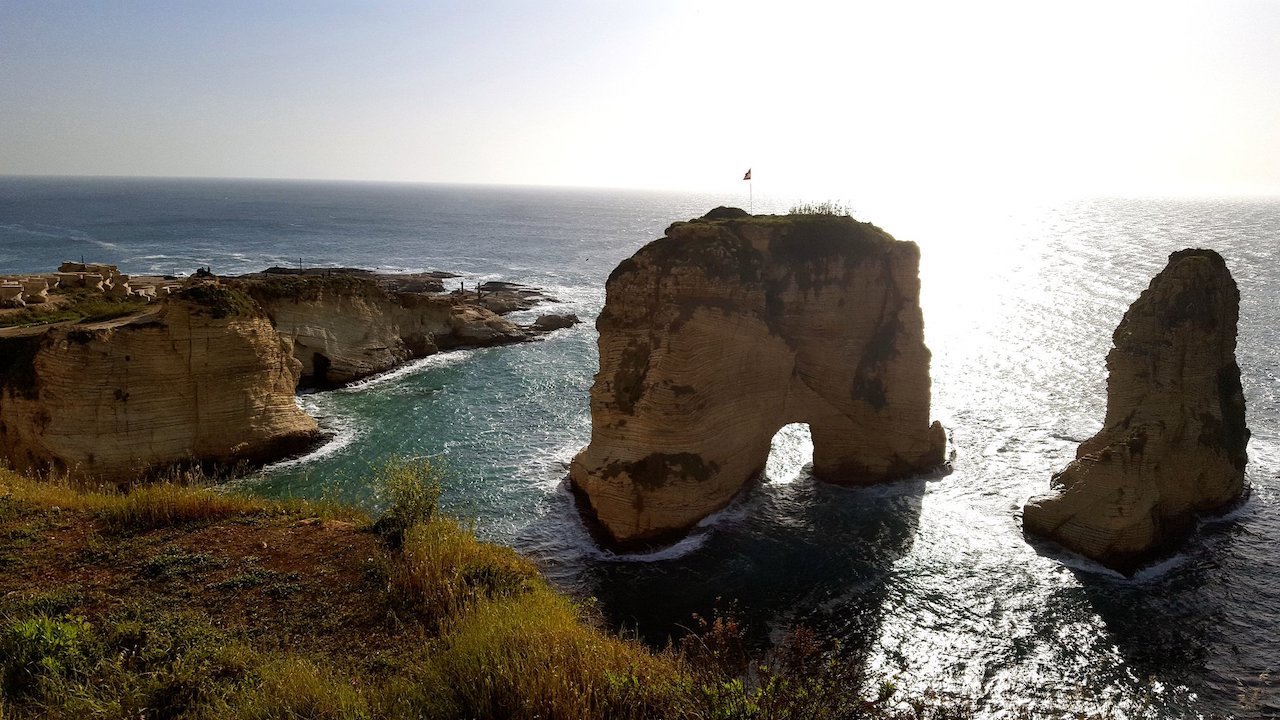
(Pigeon Rock, Raouche, Beirut)
Eventually you’ll reach the snazzier Hamra district where you can venture through the campus of the American University of Beirut. From there you can reach the Avenue de Paris promenade, a majestic coastline famous for the Pigeon Rock formation in Raouche, which bursts into life just before sunset.
Day 3: Byblos/Jbeil
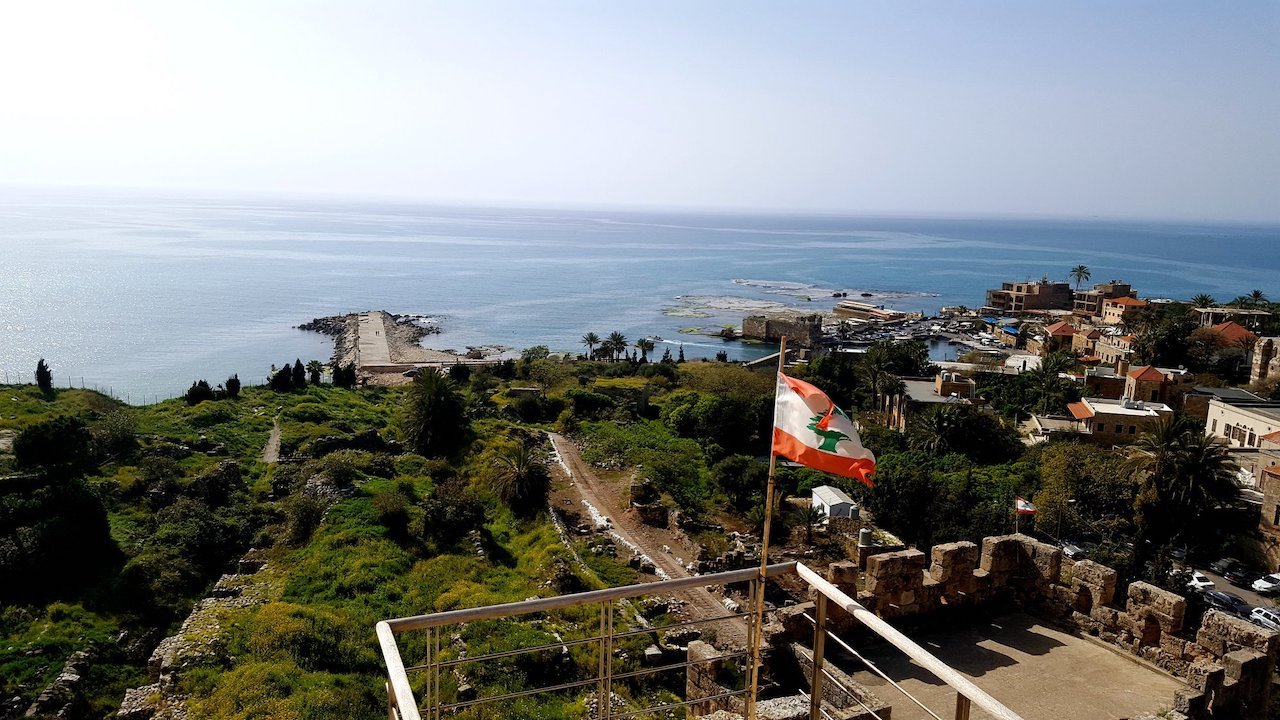
(Byblos citadel)
Grab a minibus just 40mins in the Beirut traffic down Highway 51, then hike about 20 toward Jeita Grotto.
It may seem like a rundown theme park above, but below its a jaw-dropping set of interconnected limestone caves, replete with enormous stalactites and stalagmites, and an underground river which you can explore by boat.
Next, return to the highway and head up to Byblos (Jbeil). Chill along its sandy beaches on the Mediterranean shores, before walking along the coastal promenade through the cute marina into the ancient cobbled heart of Byblos.
Explore the gardens, souqs, and ruins of the old Phoenician city, a UNESCO world heritage site, and the seamlessly integrated bars, antique shops and restaurants before wondering up Byblos’ famous citadel for stunning views of the ancient city and coast.
Day 4: Baalbek & Anjar
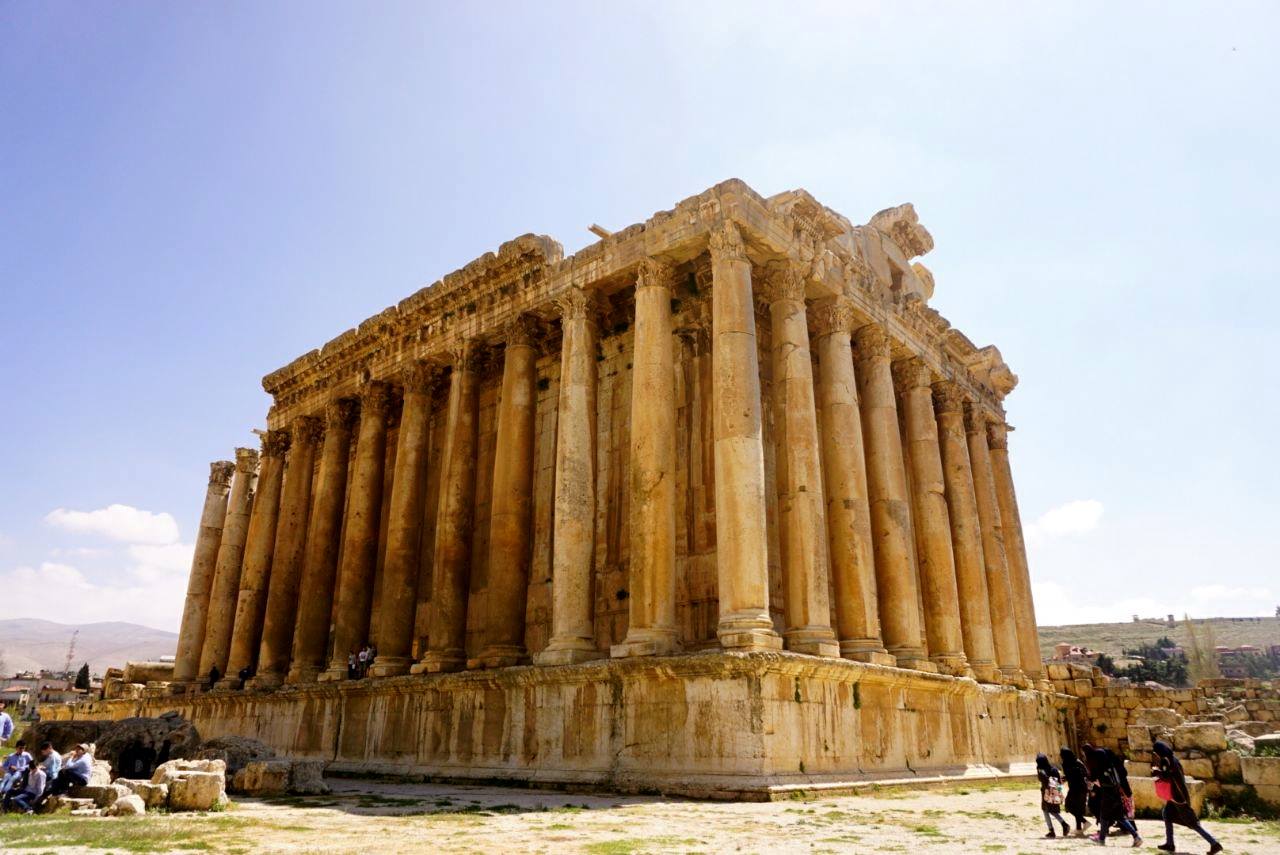
(Temple of Bacchus, Baalbek, Image Credit: Alicia Philomena)
No trip to Lebanon is complete without visiting the majestic and extensive Roman ruins of Baalbek, particularly the picturesque Temple of Bacchus, in worship of the Greek god Dionysus.
This is one of the top places to visit in the Middle East, especially if you have an interest in history.
For security, it's probably best to organise the 2.5 hour trip from Beirut by a guided tour to get the full history - try Living Lebanon which runs trips departing just outside Cafe Em Nazih.
Most trips are combined with a visit to the palatial ruins of the UNESCO Umayyad city of Anjar in the Beqaa Valley, not far from the Syrian border.
Day 5: Tripoli & Batroun
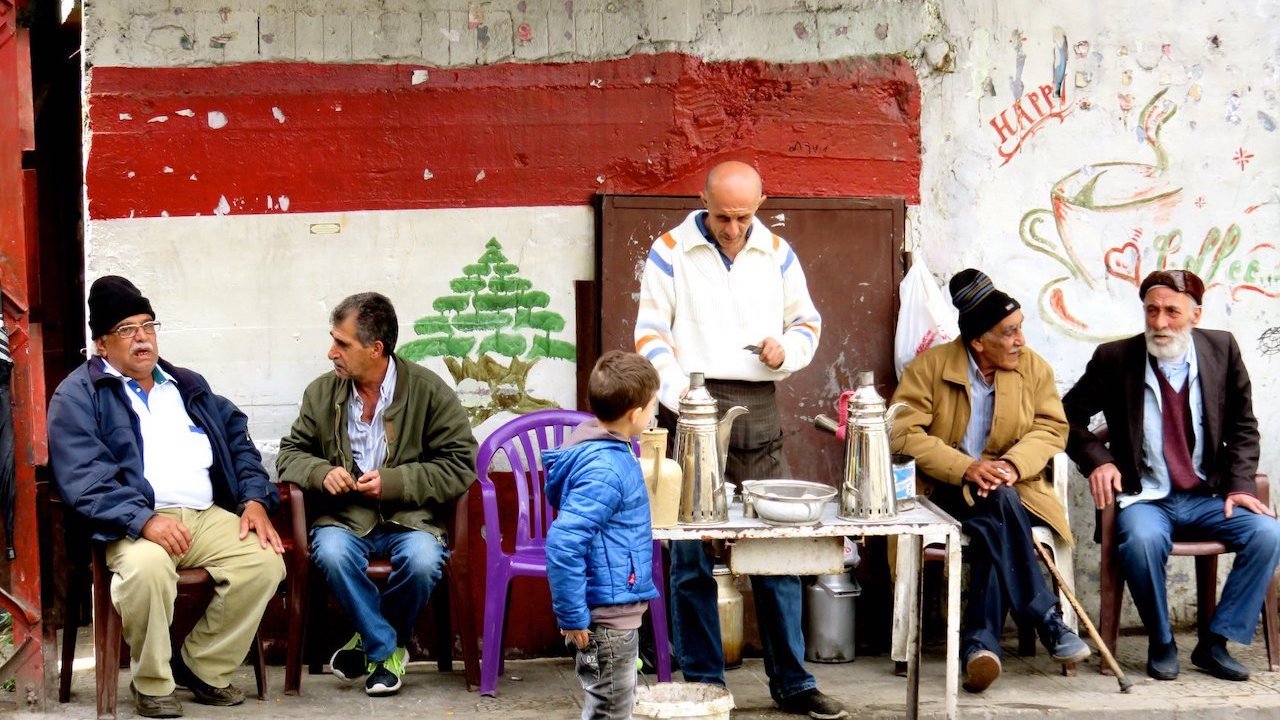
(Tripoli Souks, Tripoli)
Rise early to grab the minibus for the 3+ hours trip up the highway to Tripoli, Lebanon’s second largest city, dating back to almost 14 BCE, and home to the world’s second largest amount of Mamluk architectural heritage—behind Cairo.
Stop off at the city’s chaotic heart near the Sultan Abdul Hamid clocktower, and heading eastward, dip into Cafe Fahim for an incredibly hearty breakfast of hummus, bread and pickles. The continue the maze of Tripoli’s streets guiding yourself through the crazy and colorful clothes, spice, vegetable, and meat souks.
Wiggle through the alleyways to find the steps toward the Citadel of Raymond de Saint Gilles, the city’s imposing fort. Be sure to venture across alongside all its ramparts for stunning views of this sprawling Middle Eastern metropolis.
On your way down follow the Abou Ali River north toward the textile souks and eventually to the old vegetable market on the other side. If you continue cutting in you’ll reach Syria street and the high security and bullet ridden architecture of the Bab-al-Tebbaneh and Jabal Mohsen neighbourhoods, home to Sunni and Alawite muslims respectively--who have been in tense conflict since the Lebanese civil war. Some walls and steps are adorned with graffiti art in attempt by NGOs to regenerate this war-torn area. Be careful, there is alway the risk of a flare up.
As you return to Beirut, jump off the minibus at Batroun for an evening stroll along its coastal alleyways. Starting at its large port walk south alongside its phoenician wall where you will eventually come across the cute sea facing Our Lady of the Sea Church. Continue on toward the Ray Sur Mer restaurant where you can dine in front of the crashing waves in a cosy setting.
Day 6 ,7: Bsharri
After five days of Middle Eastern cities, ruins and beaches, it's time for a detox.
Grab a minibus to the highway again, stop over at the large roundabout where most of buses gather just outside the capital. Here you can find a bus going up to Bsharri—a quaint mountain village hidden in the Kadisha valley. It can be a rickety 4-5 hour journey up into the mountains, and be patient as many will be looking for a lift en route.
Try to stay at the homely Tiger Guesthouse. The alpine village is sprawled on the side of the valley, so there are plenty of stunning views as you traverse its many layers -- explore its wavy cobbled streets and dominating churches.
During Easter there's a particularly communal feel with several street fetes. Food options are limited but Al Zaytouni’s sandwich house is best for shawarma, and check out Rtc Restaurant higher up where you can chill over shisha and enjoy incredible views over the village and valley.
Ultimately, Bsharri is all about hiking. Most trails start heading westward out of Bsharri where you can hike through the emblematic cedar trees and into the magisterial Kadisha valley.
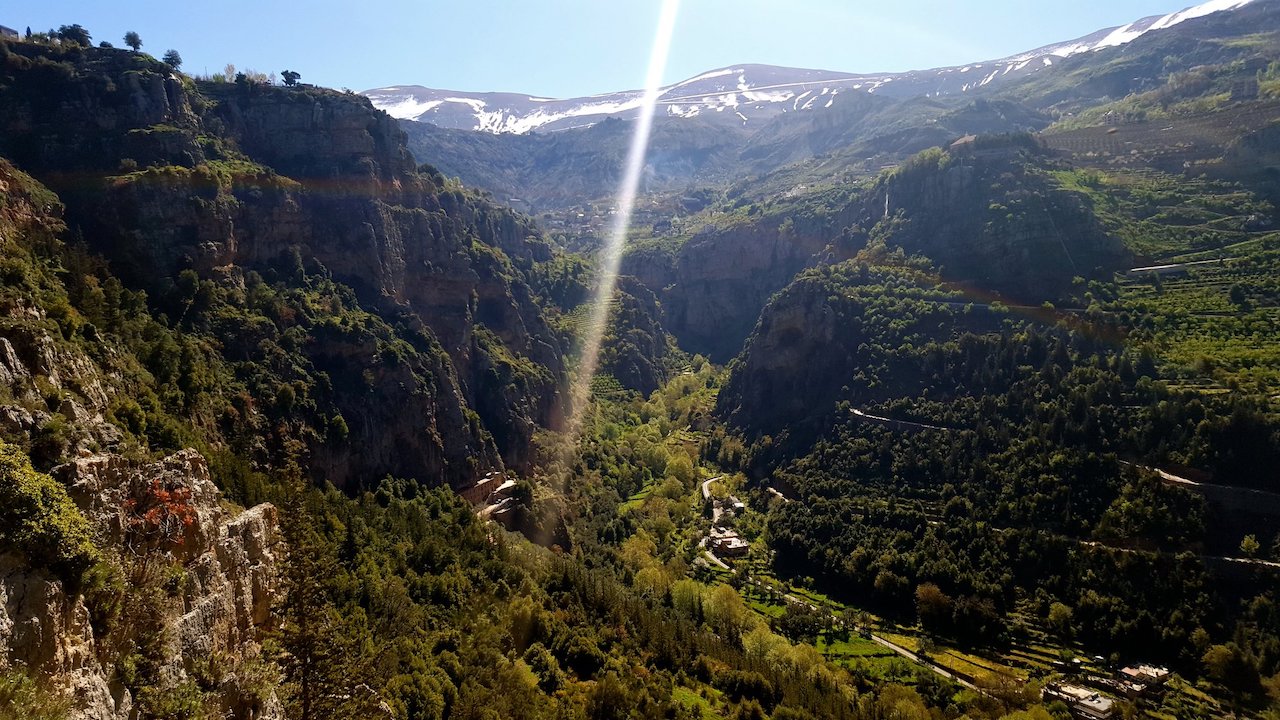
(Monastery of Mar Elisha, Kadisha Valley, Bsharri)
Be sure to take the steep descent to visit the Monastery of Mar Elisha, a ancient hidden gem, once a refuge for monks, carved out of the valley side. If you’re feeling energetic enough hike up the other side of the valley for even finer views of the monastery.
Plan a Trip to Lebanon
Have you ever been to Lebanon? Do you have any recommendations for places to visit or things to do? Share your thoughts in the comments sections below.
By Tej Parikh

